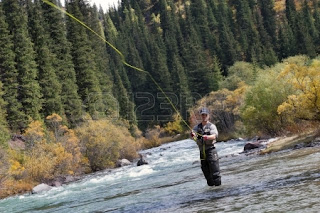Like
many of you, I write down my thoughts and experiences from time to time, keep a
journal on occasion around travel,
maintain a blog and use social media, mostly Twitter and LinkedIn, for a
variety of purposes. I have
written several books, numerous articles, and have a web site, in need of an update and refresh. Until recently, about five years ago, I never
considered myself a writer although I may have morphed into that activity out
of the encouragement and support of others in my network of colleagues and
friends. I wrote columns and
contributed to newsletters considering those part of my work and career.
Now, at this later stage of my career, having begun professionally in 1962, I have the luxury of working part time. I respond only to those invitations and projects that interest me most, often having to do with change and transition, whether in organizations or in individuals. While change is an all-embracing topic, I consider myself a life-long learner who is still willing to change what I do or how I do it if I believe it will be better than what I was doing previously. And, I stick to some “tried and true” practices as well.
I began working outside of home in 1947 at age 10 when I set pins in a bowling alley. I always had jobs at home and still do! I got my social security card and felt like a real grown-up worker guy. The Protestant work ethic was alive and well in our family from an early age onward. Other jobs I had before I graduated from high school included working on the railroad in maintaining the tracks; being a grease monkey in my Dad’s auto dealership; helping my grandparents, one on a farm, the other in a general store in a small town; and being a camp counselor and cook for 300 Boy Scouts. Work in the college years included life guard; construction labor; and office experience. Such a variety was most welcome especially as learning experiences and the pay was good too.
In 1959, I started driving buses and continued that through graduate school and beyond during summers, holidays and sometimes weekends. Last year, because I enjoy driving vehicles of any kind, I accepted a job driving an airport shuttle from Santa Fe to Albuquerque two mornings a week. It was fun and I met all kinds of interesting people from all over the world. The stories of their lives and work are fascinating. None of these other jobs have ever taken anything away from my main career as a teacher, administrator, leader and consultant. If anything, those jobs of a different sort add a dimension of understanding and appreciation for the human condition.
I am deeply grateful for the immense opportunities that I have had to be an active participant in so many productive experiences. My education contributed enormously to my career. The K-12 journey followed by 4 years of undergraduate school, 7 years of two graduate programs in two different places resulting in 4 degrees have all played their respective parts.
The privilege of being selected to lead several schools in their growth and development as principal or headmaster was only successful because of all those other people who contributed to those experiences. It was truly a team effort. Out of all of this came an invitation to serve as a consultant to both organizations and individuals that were considering transitions, significant growth and change. I did that formally and professionally with a firm located in Boston, and I had the privilege of living in and working from Santa Fe although it required a fair amount of travel. Now I do it on my own time when and where I choose. I would not have dreamed of such even ten years ago but here we are.
What’s next as I look ahead? I am continuing to learn more about technology and educational reforms, planning a few more writing projects, some more travel. I contribute to the professional development of others through seminars, workshops and symposia on several different topics and did two workshops last November, one in Santa Fe for Leadership and Design, and one in Barcelona for ECIS (European Council of International Schools) and another in London in January.
On the personal front, we have downsized (see blog entitled “When Downsizing is Right Sizing: Why Less is More”) and we are very connected to our seven children, thirteen grandchildren and several siblings. I am blessed with good health, energy and enthusiasm for living fully. We are looking forward to having all our children and theirs together next Thanksgving in Vermont for one of our ongoing reunions and they all have their own unfolding stories which are fascinating. What a tribe and what a world!
If you've gotten this far and you consider yourself a fellow-traveler, lifelong learner, you might be interested in my brief catalogue of learning experiences that were a big influence in this life thus far:
http://tinyurl.com/ngshjm4 Enjoy!


